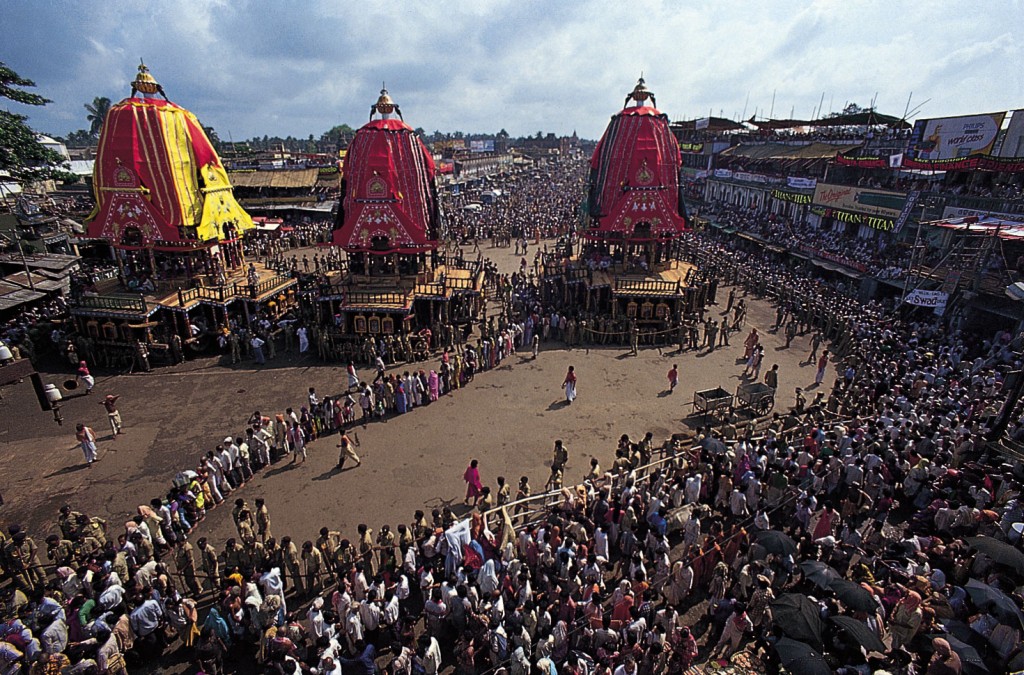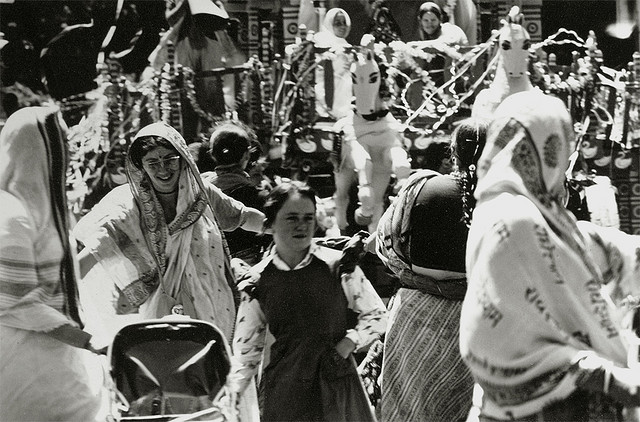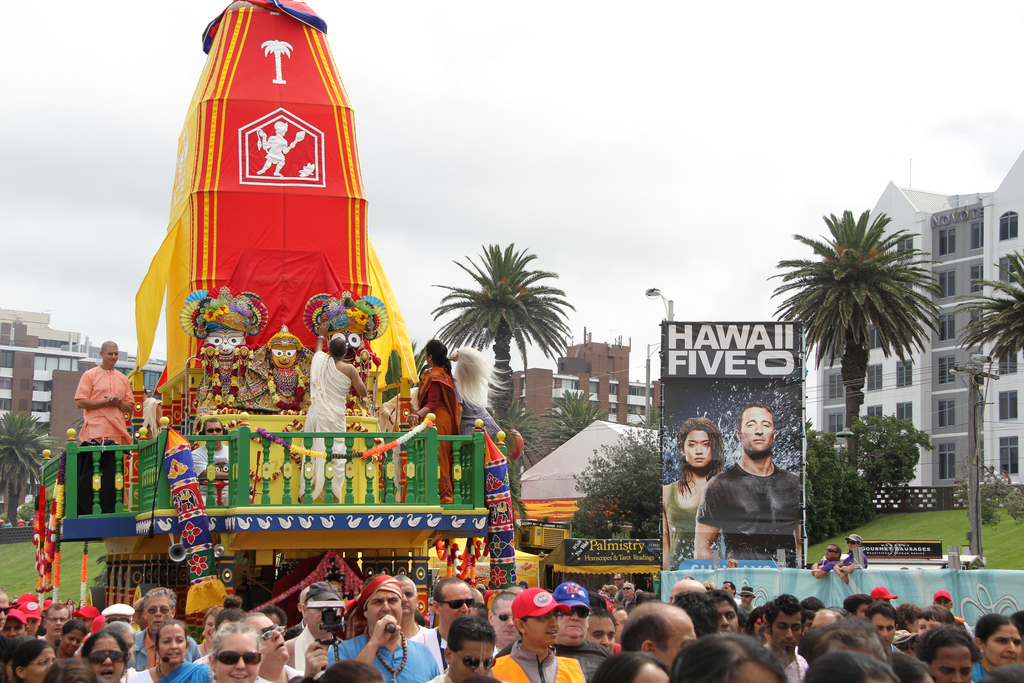About
The Festival of the Chariots (Ratha-yatra) is perhaps the oldest continuously celebrated festival in the world.
As far back as human records and memory extend, each summer the splendidly decorated chariots of Lord Jagannatha, his brother Baladeva and his sister Subhadra, have rolled through the town of Puri (on the Bay of Bengal in India), to the delight of millions of joyous pilgrims. Their towering red-and-blue silken canopies rise into the sky as drums and cymbals resound in joyous celebrations. People young and old, their eyes bright with excitement sing and dance in the street, as if swimming in an ocean of overwhelming happiness.
Over forty years ago, Hare Krishna devotees brought this tradition to the streets of cities all around the world. The first time Melbourne hosted the Festival of the Chariots was in its Central Business District in the 1970s. Then in 2011, Hare Krishna Melbourne returned the Festival to our State Capital as part of the famous St Kilda Festival.
Who or what is on the Chariot?
The unusual passengers of the chariots are the bona fide deity forms of God, called Jagannatha, Baladeva and Subhadra. “Jagannatha” means “the Master of the Universe”.
As the story goes, when He descended to Earth over five thousand years ago, Lord Krishna once overheard a conversation about how His dearest devotees, the cowherd maidens of Vrindavana, were lamenting in His absence. When He heard these accounts of overwhelming love in separation, the Lord’s hair began to stand on end, His eyes opened wide and filled with tears, and His arms and legs contracted as He went into a state of spiritual ecstasy. Seeing Lord Krishna in this condition, His elder brother, Balarama (Baladeva), also began to feel ecstatic symptoms and displayed similar features. When Their sister, Subhadra, arrived at the scene, she too became consumed with ecstatic joy. So, the sublime deity forms of Jagannatha, Subhadra, and Baladeva remind us of this sweet pastime.
A glimpse of Lord Jagannatha on the chariot is considered to be very auspicious. Saints, poets, and scriptures have repeatedly glorified the sanctity of this special festival: even a touch of the chariot or the ropes with which these are pulled is considered enough to confer the results of pious deeds or penances performed over many lifetimes.
More about the Festival of the Chariots
The festival of Ratha-yatra represents Lord Jagannatha’s longing to reunite with His dear devotees in Vrindavana. Foremost among them is Srimati Radharani. According to tradition, the Lord gets lovesick once a year just prior to the festival. To cheer him up, His servants arrange for Him to go on a lavish procession to meet up with His devotees. Lord Jagannatha rides on a grand, three-story-high chariot, accompanied by thousands of onlookers, marching bands with scores of drummers, singers, and dancers. India’s colonial British rulers coined the term ‘juggernaut’ in reference to the large, heavy chariot used to celebrate this festival in the city of Jagannatha Puri.
Five hundred years ago, Lord Chaitanya Mahaprabhu, the combined incarnation of Radha-Krishna, encouraged all of His followers to celebrate Ratha-yatra with great enthusiasm. His biographies (such as Chaitanya Charitamrita) list many anecdotes surrounding the Ratha-yatra festival. It is said that Chaitanya Mahaprabhu got down on His hands and knees to scrub the Gundicha temple where Lord Jagannatha would stay at the end of the Ratha-yatra parade.
Srila Prabhupada, the Founder-Acharya of the Hare Krishna movement, was very fond of Ratha-yatra. As a child he began celebrating Ratha-yatra when he was five years old, using a small home-made cart and pulling it around the neighbourhood with his friends. Later in life, from 1967 until his passing in 1977, Srila Prabhupada joined thousands of disciples in cities around the world as they celebrated elaborate Ratha-yatra festivals in the streets of London, Paris, Sydney, Tokyo, San Francisco, Los Angeles, and on New York’s prestigious Fifth Avenue.
Today, Hare Krishna devotees hold Ratha-yatra parades in over one hundred cities, including Dublin, Belfast, Birmingham, London, Budapest, New York, Montreal, Paris, Moscow, Singapore, Toronto, Antwerp, Kuala Lumpur, Durban, Sydney, Mumbai, New Delhi, and Los Angeles. Usually, the festival experience culminates in a Vedic Village with festival tents, entertainment stages, vegetarian food stalls, and a variety of cultural displays and exhibits.
Ratha-yatra signifies the Lord’s love for His devotees. He personally comes to visit His devotees and the public who welcome Him in the streets.
Interesting Facts
-
- Every year the king of Orissa, India, sweeps the ground before the chariots in an act of humility and gratitude.
- The current Jagannatha temple in Puri, India, was built sometime between A.D. 1078 and 1147



